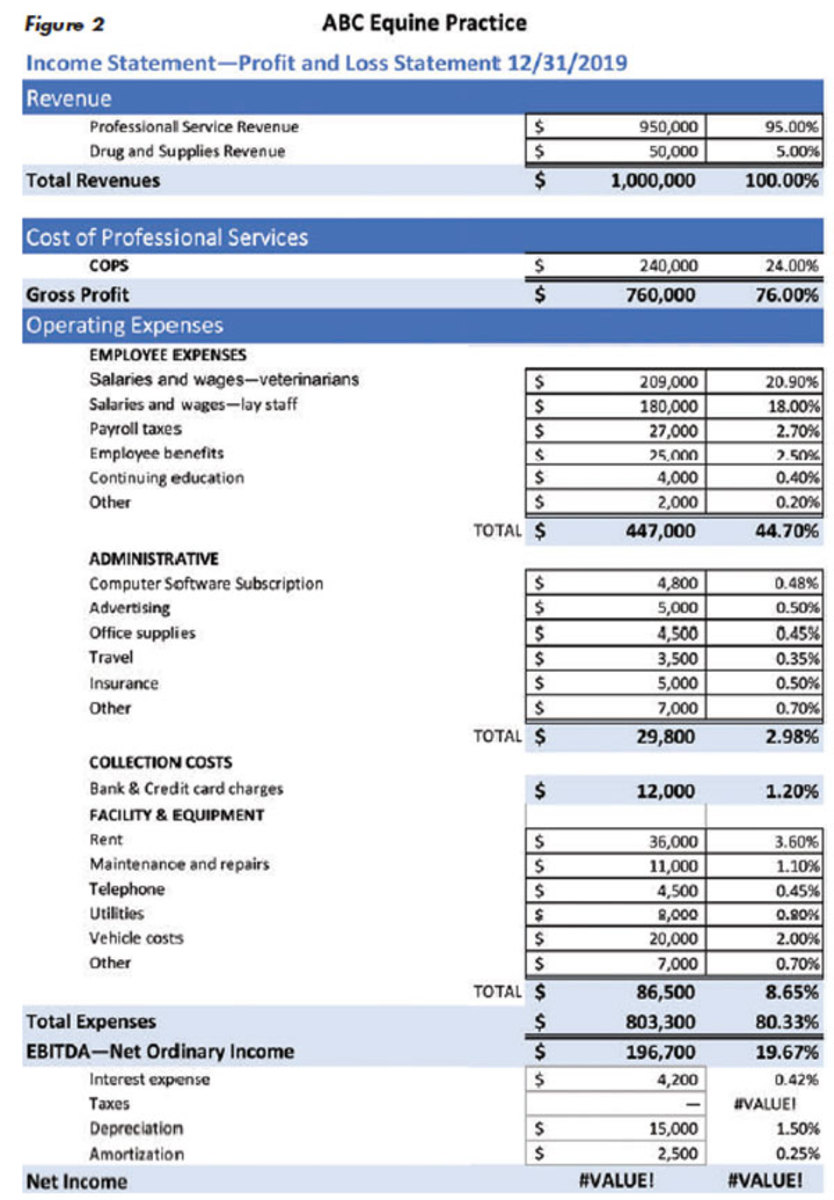
A P&L statement is a written record that allows you to diagnose your practice’s financial strengths and weaknesses to increase the life and profitability of your company. Complete financial statements are usually prepared annually, but the income statement (P&L) should be reviewed on a monthly or a quarterly basis.
Complete financial statements include:
- Profit and Loss (P&L) Statement (also called Income Statement)
- Cash Flow Statement
- Balance Sheet
These documents provide a story of the financial decisions and results of those decisions for a business during a specific period of time (see Figure 1).

The Profit and Loss statement categorizes the various revenues and expenses that result from operating during a given period—a year, a quarter or a month. As the practice conducts its business, the accounting system tracks, organizes and records the financial transactions of the business using a chart of accounts. The sum of revenues (+) and expenses (-) represents a company’s net income or net loss during the period.
The primary purpose of the income statement is to demonstrate a practice’s ability or inability to generate profit and to describe how the profit or loss arose.
The Chart of Accounts is a listing of all the accounts on your Financial statements. This is an organized listing of all the income, expense, asset, liability and equity categories present in the business to allow classification of every transaction as it occurs. There is usually a numeric code assigned for each account. You can have as many or as few accounts as the practice needs.
The saying “GARBAGE IN, GARBAGE OUT!” is incredibly true. You must remember that you cannot manage what you are not measuring. Whomever is doing your bookkeeping needs to be careful and consistent. If you serve as your own bookkeeper, take a course in QuickBooks and/or basic bookkeeping.
When total expenses are subtracted from total revenue, the result is Net Ordinary Income, or EBITDA (earnings before interest taxes depreciation and amortization). EBITDA is the best measure of profitability. All loan payments (principal and interest) and equipment bought outright with cash come from EBITDA. Thus, a loan’s principal payment is not included on the P&L. Only the interest portion of a loan payment is reported on the income statement, and it is reported as Interest Expense below EBITDA (see Figure 2).

The value of a practice lies in its profitability. Many veterinary business owners look proudly at the amount of gross revenue their practices produce and neglect to look at their profitability. It is best to look at EBITDA when comparing profitability, because it is difficult to make accurate comparisons if the actual bottom line (net income) is used. For example, a practice that has borrowed significant amounts, is paying a lot of interest, and has a lot of depreciation will be hard to compare fairly to one with little debt unless EBITDA is used.
Similar businesses in the same industry in the same location can have very different valuations, because they can have very different profitability. Profitability is highly dependent on the owners’ decisions about pricing, inventory management and expense management.
P&L reports provide a lot of information about the operations of a business and ways to improve its profitability. Taking the time to understand and review your income statements is critical to your success.








